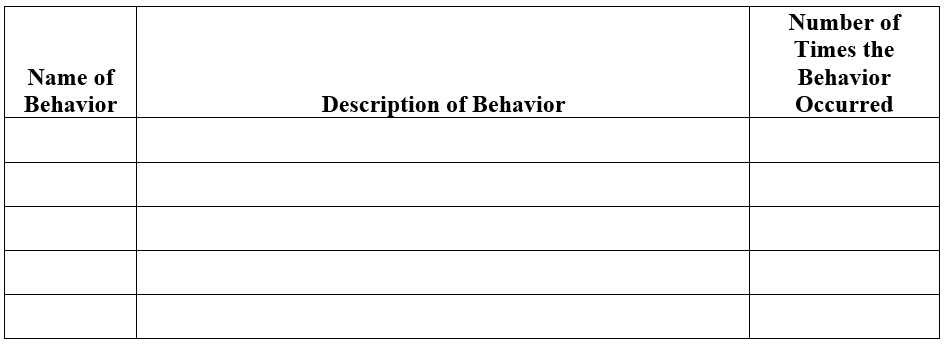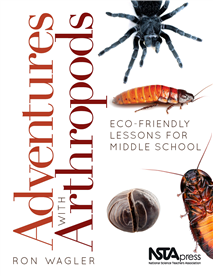NSTA Press
What Are These Bugs Under the Log?
Home-Based Science With Terrestrial Isopods
By Dr. Ron Wagler (Guest Blogger)
Posted on 2020-04-22
Disclaimer: The views expressed in this blog post are those of the author(s) and do not necessarily reflect the official position of the National Science Teaching Association (NSTA).
Terrestrial isopods go by many common names such as roly-poly, sow bug, and pill bug. They are small land-dwelling crustaceans that are related to shrimp and lobsters. Figure 1 shows a terrestrial isopod species people frequently encounter in the United States.

Source: Franco Folini, Wikimedia Commons, CC By-SA 3.0, https://commons.wikimedia.org/wiki/File:Armadillidium_vulgare_001.jpg.
Background
Because of their gentle nature, terrestrial isopods are excellent animals for home-based, hands-on science. You can easily collect them, and they may very well be in your yard right now! The best time to collect terrestrial isopods is from spring to fall. They can be found under rocks, dead logs, dead vegetation, and other objects where the humidity remains high. Lifting these objects will expose the terrestrial isopods. To pick up a terrestrial isopod, gently touch the end of the terrestrial isopod with your finger and allow it to walk onto your other hand. You may also gently put your thumb and index finger on either side of the terrestrial isopod and pick it up. Once you have successfully and safely picked up a terrestrial isopod, show your kids how to pick one up. Attempt to collect 10 terrestrial isopods for each kid. After you and your kids have collected the terrestrial isopods, place them in a container that has a secure lid with small holes. Be sure to also put a single moist cotton ball inside the container to provide the appropriate humidity. Remember to always wash your hands with soap and water after touching terrestrial isopods.
Now that you and your kids have collected a group of terrestrial isopods, you can use them at home to do fun science activities!
Activity 1: What Do They Look Like?
First, your kids will take a closer look at the terrestrial isopods they found. Have each of your kids gently place one of the terrestrial isopods in their own separate container so that they can closely observe it using either their naked eye or a hand lens.
Based on their observations, have your kids make anatomically correct terrestrial isopod models out of colored modeling clay (such as Play-Doh) and colored pipe cleaners. The body of the terrestrial isopod will be made of colored modeling clay, and the appendages will be made of colored pipe cleaners. If you do not have these exact materials, feel free to use other materials to help them make their terrestrial isopod models. Finally, have your kids place their model on a piece of white paper and label the external anatomical features. See my student guide for a description of the external anatomical features your kids will observe and additional information on terrestrial isopod biology. More information on terrestrial isopod anatomy can also be found by searching Google images for the phrase terrestrial isopod anatomy.
Now that the first activity is complete, have your kids gently return the terrestrial isopods to the container with the moist cotton ball and close the lid. Everyone should then wash his or her hands with soap and water. Allow the terrestrial isopods to remain in this humid container for 10 minutes, and then have your kids gently remove them to do Activity 2.
Activity 2: What Do They Do?
For our second activity, your kids are going to watch the terrestrial isopods and observe their behaviors. Have them fill their separate containers with both smooth and textured objects (such as rocks, sticks, leaves, small pieces of folded paper, craft sticks, or coins) and then gently place 10 terrestrial isopods inside. (If you do not have 10 terrestrial isopods for each of your kids’ containers, then have your kids gently place the maximum number you have into each of their containers for this activity and Activity 3.) Your kids will observe the terrestrial isopods walk, move their antennae, use their antennae to touch objects (including other terrestrial isopods), and climb objects. For a description of additional behaviors your kids might observe, see the student guide again. Have your kids record the behaviors they observe in Table 1.

Now that the second activity is complete, have your kids gently return the terrestrial isopods to the container with the moist cotton ball and close the lid. Everyone should then wash his or her hands with soap and water. Allow the terrestrial isopods to remain in this humid container for 10 minutes, and then have your kids gently remove them to do the next activity.
Activity 3: What Will They Choose?
For the last activity, your kids are going to see what foods terrestrial isopods prefer. Terrestrial isopods will eat many different types of food, but just like your kids, they prefer certain types of food over other types of food. Have your kids gently place 10 terrestrial isopods in their separate containers, along with different types of food to see which food the terrestrial isopods seem more interested in eating. For example, trial 1 could be potato versus apple, trial 2 could be carrot versus orange, and trial 3 could be romaine lettuce versus cucumber. Have your kids enter the data for each trial into the data collection sheet in Table 2.

Note: Remove the terrestrial isopods from the container when they begin to eat one of the foods. This will ensure that they are still hungry for the next trial. If multiple foods are chosen, list the food and the number of terrestrial isopods that chose that food.
Get creative with your trials! Figure 2 shows a trial I did with three different foods. Which food do you think the terrestrial isopods chose during my observation?
Note: Left = hard marshmallow from a sweet cereal; center = dry dog food; right = apple square.
After you and your kids have completed Activity 3, gently return the terrestrial isopods to the container with the moist cotton ball and close the lid. Then carefully return the terrestrial isopods to the place you found them. Remember to wash your hands with soap and water after you’re done putting them back.
I have completed these simple and fun science activities with my own kids. I hope you and your kids find them as enjoyable as we have found them! Please feel free to e-mail me at rrwagler2@utep.edu if you have further questions about these amazing animals or any of the activities presented here.
Keep the Fun Going!
1. Find out what types of food terrestrial isopods eat in nature.
2. Read aloud the NSTA Kids book Next Time You See a Pill Bug, by Emily Morgan.
3. Check out this video highlighting some of the captive-bred living arthropods from my laboratory.
Dr. Ron Wagler is an associate professor of science education at the University of Texas at El Paso (UTEP). He is also the founder and director of the Living Arthropod and Environmental Education Laboratory and a distinguished teaching professor at the UTEP Academy of Distinguished Teachers. He is the author of the NSTA Press book Adventures With Arthropods: Eco-Friendly Lessons for Middle School. To learn more about Dr. Wagler, please visit his official website at http://volt.utep.edu/ronwagler.

Biology Lesson Plans Early Childhood Elementary Grade 1 Grade 2 Grade 3 Grade 4 Grade 5


